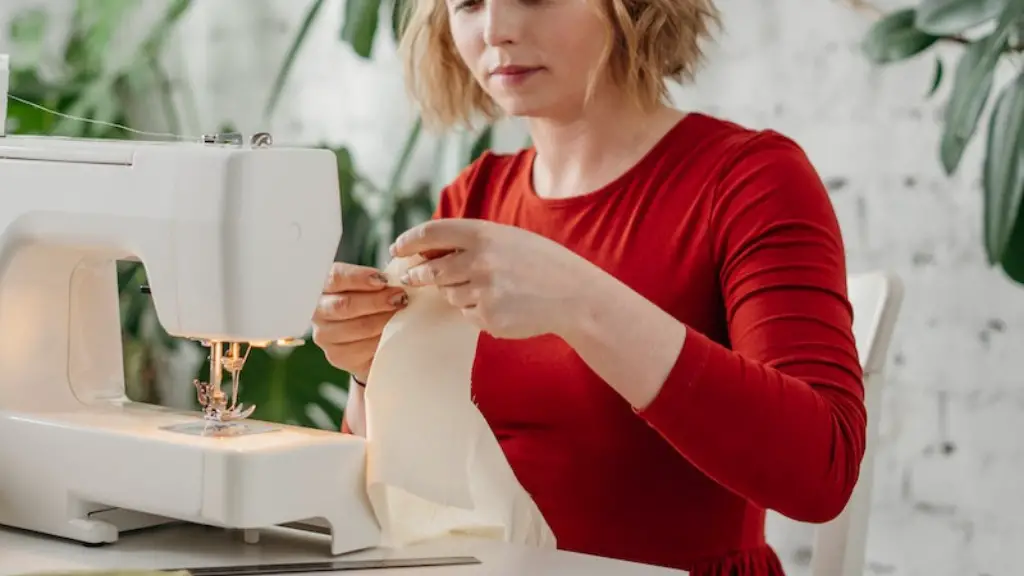Plushies are a perfect way to express your creativity and love for crafting – and one of the best ways to make them is using a sewing machine. With just a few simple steps, you can create a delightful and unique plushie of your own. Let’s take a look at how it’s done.
Selecting Fabrics for Your Plushie
Choosing the materials for your plushie is the most important part of the process. To ensure your plushie turns out the way you want it to, you should choose fabrics that contrast nicely. If you’re a beginner, a cotton-backed fabric like fleece is an easy choice. Alternatively, a cotton blend will give your plushie a more sophisticated look. Sew in some felt features to make it extra special.
Creating a Plushie Template
The next step is creating a template for your plushie. Use a piece of paper to draw the shape of your plushie, and then use this drawing to create the pattern pieces you’ll need. Cut out the pattern pieces from your chosen fabric, and make sure to add seam allowances to each piece. You’ll need two pieces of fabric for each piece of your plushie – one for the outside and one for the inside.
Adding Features to Your Plushie
Now it’s time to add features to your plushie. You can use felt pieces or special features like eyes, noses, or ears. You can also add details like bows or patches. Make sure the placement of these features is the same on the outside and inside pieces of fabric. Finally, add any decorations you want to make your plushie even more special.
Sewing Your Plushie Together
Once you’ve got all your pieces and features ready, it’s time to sew them together. Pin the two pieces of your plushie’s body together and then stitch them together with a simple straight stitch. Then, using your embroidery machine, stitch the eyes, nose, and other features you’ve added to your plushie. When you’re done, turn the plushie right-side-out and stuff it with stuffing.
Finishing Your Plushie
The last step is finishing your plushie. You can use a sewing machine to add any extra details you want to your plushie. For example, you can use a zipper foot to add a zipper or use a wide zigzag stitch to add a ruffle. Once you’re done, your plushie is finished and you can give it to someone special or keep it for yourself.
Tips for Making Plushies with a Sewing Machine
If you’re just starting out with making plushies, here are some tips that will help you get started on the right foot:
- Choose a fabric that’s easy to work with, like fleece or cotton-backed fabric.
- Take the time to create a well-structured pattern for your plushie.
- Use felt pieces or other special features to make your plushie more interesting.
- Stitch the eyes, nose, and other features with an embroidery machine to make sure they’re secure.
- Choose a zipper or a wide zigzag stitch to add a unique finishing touch to your plushie.
Getting the Right Sewing Machine for Making Plushies
If you’re planning to make plushies with a sewing machine, it’s important to get the right machine. For beginners, an entry-level machine like a Brother 1034D or Janome Magnolia 7330 is a great choice. These machines have a variety of stitch options, making them perfect for creating intricate plushie designs. For more experienced sewers, a more sophisticated machine such as a Brother SE620 or Janome Memory Craft 5200 is a great option.
Choosing the Right Plushie Patterns
When you’re ready to start making your plushies, you’ll need to choose a pattern. You can find Patterns for sale online, at most fabric stores, or you can even create your own. Look for patterns that have clear, easy-to-follow instructions, and be sure to double-check the measurements before you start cutting and sewing. Also, look for patterns that use a variety of techniques like applique, embroidery, and quilting.
Storing Your Plushies Safely
Finally, you’ll need to store your plushies safely. Plushies can easily get ruined if they’re exposed to dust, dirt, or moisture. You should keep them in a plastic container and in a dry, dust-free area. If you want to store them for a longer period of time, use sealed plastic bags and make sure you leave enough space for air to circulate.


